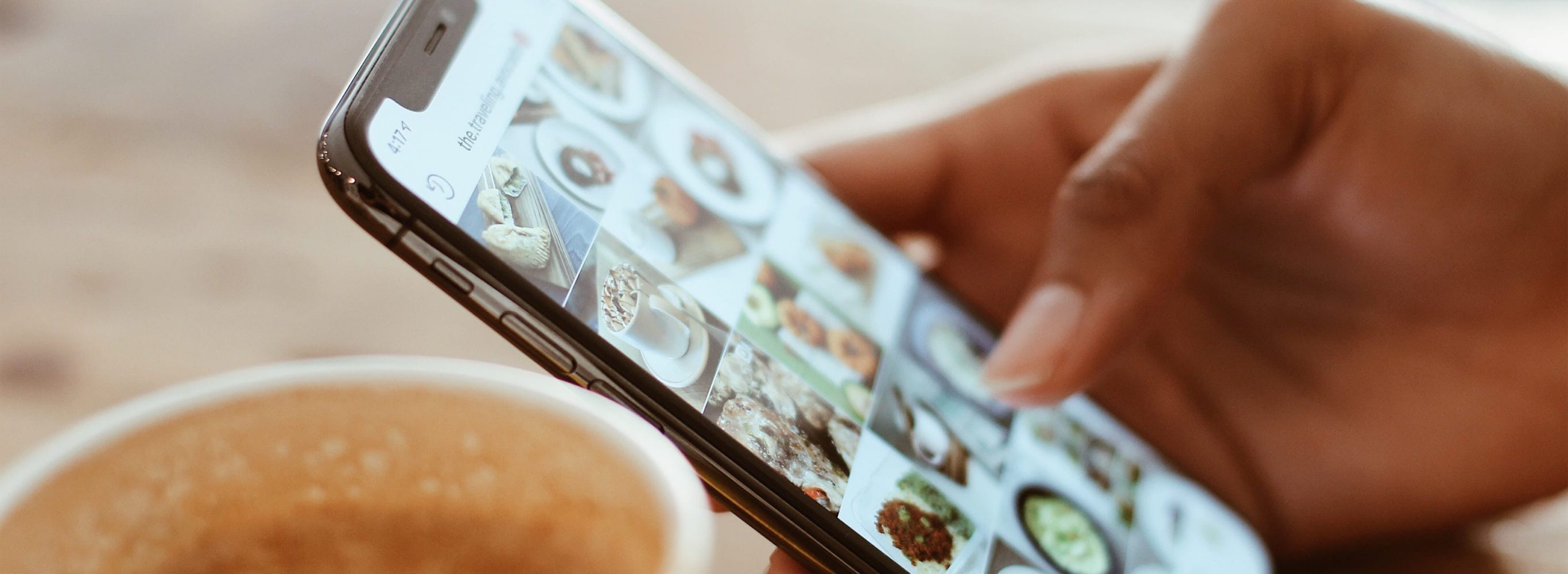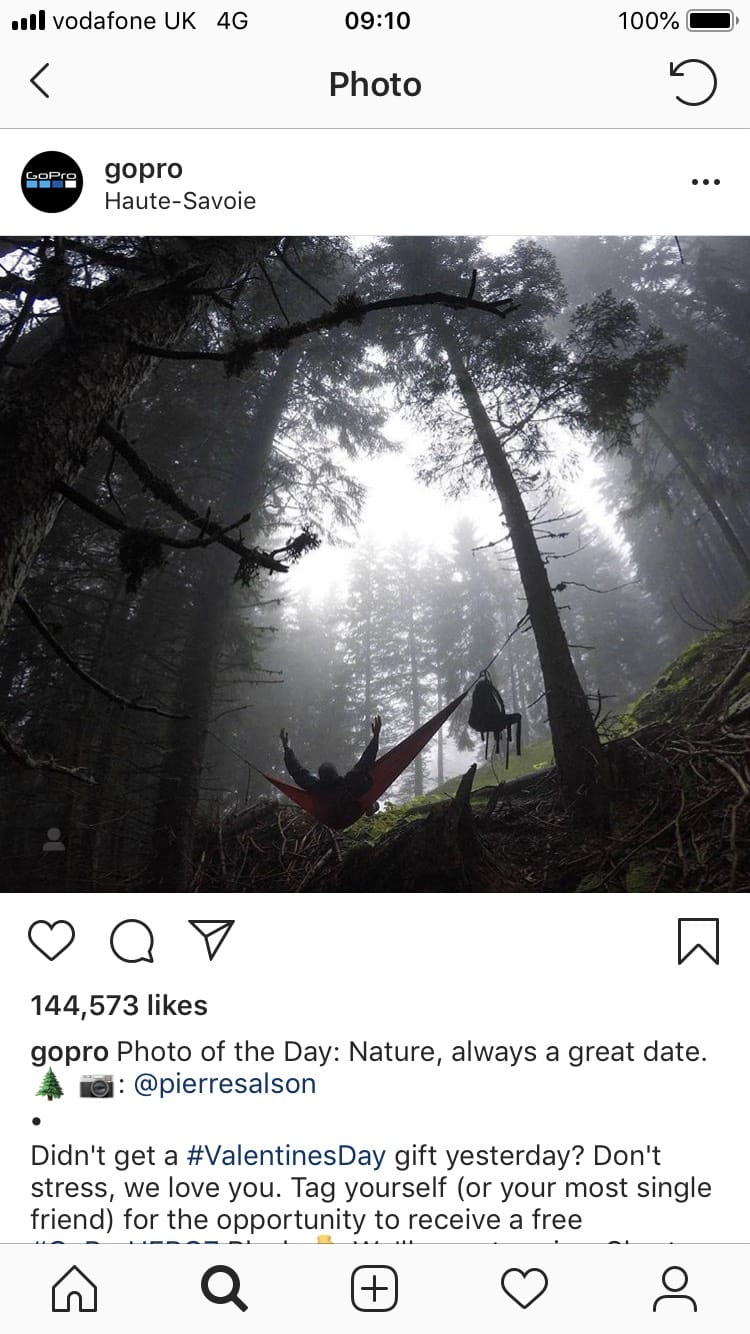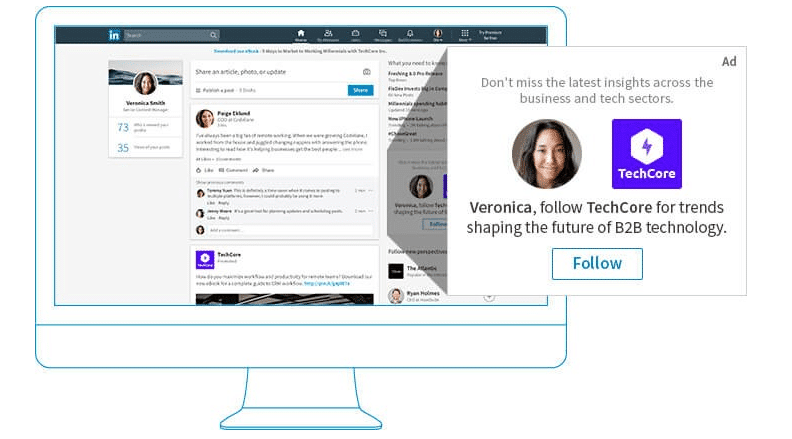The latest social media trends you need to know about
Nearly 90% of digital marketers have found their presence on social media resulted in increased exposure for their business, and 75% stated it increased traffic too.
With 71% of social media users saying they’d recommend a brand to others if they had a good social media service experience with it, it’s fair to say that this represents a huge opportunity for businesses.
However, just having a presence on Facebook, Twitter and Instagram, where you churn out post after post of branded content, isn’t enough. Instead, these latest social media trends for businesses that we’re about to uncover, will (if implemented correctly), help to grow your audience engagement, and increase traffic to your website.

User-generated content is king
We all know that social media doesn’t work if all you promote is your brand, and the products or services you sell.
With consumers craving a human connection with brands, it makes sense that in order to increase engagement, one of the latest social media trends to take note of, is the rising importance of user-generated content. Often shortened to UGC, it’s exactly what it sounds like: content that’s generated by other users.
Providing authentic information about your brand, and your product offerings from previous customers, boosts your credibility, whilst saving you time and money in generating your own content for social media.
For fashion brands, this is easy: set up your own hashtag (just search #monkistyle and you’ll see fashionistas all over the world sharing snaps of them head-to-toe in the Scandi brand). But, it’s important to remember that it’s not just fashion labels that can leverage UGC to their advantage – you just need to know where your customers are online, and what they’re sharing.
For example, GoPro has made full use of UGC on Instagram, resharing customer pictures to highlight the excellent quality photos that can be taken, if using the features found on a GoPro.

Get personal with LinkedIn dynamic ads
LinkedIn have updated their paid advertisement offerings, with brands now able to engage potential clients by showcasing ads that are automatically personalised to them. That means you can create ads that feature information from each individual professional’s LinkedIn profile, including their job title, the company they work for… even their profile picture.

LinkedIn have stated that this will “capture your audience’s attention in a way that standard display ads can’t”. Whilst it may be early days, it’s showing signs of success – the click-through rates of dynamic ads are already twice as high as traditional display ads.
In practice, dynamic ads have shown success in three ways:
- Building brand awareness: Follower ads (like the one shown above), enable you to grow your following, by encouraging users to like your page. This, in turn, expands the audience that views the organic content you share on your company’s LinkedIn page.
- Increasing traffic and conversions: With spotlight ads, you can encourage additional traffic to a specific page on your website. This could be a landing page with more information on your products or services, a blog article, event, video, or even a newsletter.
- Generate leads: If this is your goal, then by making use of the content ads, you can point viewers to gated content, which they’ll need to input their details to access. You’ll then either have the opportunity to download the leads directly from your website, or use an external CRM.
With LinkedIn working particularly well for B2B businesses, this is one of several social media trends that your brand can’t afford to ignore for the year ahead. To get started, simply choose your campaign objective, and start driving results – LinkedIn breaks down the steps for setting up successful dynamic ads.
Don’t disregard the power of Instagram stories
One of the latest social media trends will have businesses with low budgets rejoicing.
Over 400 million people across the world use Instagram Stories on a daily basis – an incredible jump from last year, which was “just” 250 million. In fact, Stories has become twice as popular as Snapchat; and brands are figuring out that it’s a great way to engage users. Best of all? It’s free.
The number of times you post per day will, of course, be different for each individual brand – once you’ve started using Stories, you’ll soon figure out the optimum number that has users coming back in a 24-hour period, without them getting overloaded and frustrated by updates.
The short-term nature of Instagram Stories (they’ll be deleted forever after 24 hours, unless you save them to your profile), makes them a great way to share #bts footage of your brand, in addition to access to flash sales, and highlighting new products.
One brand that’s killing the Instagram Stories game is beauty and skincare brand Glossier. Having built their brand through social media, they engage their millennial audience through their lighthearted Stories.
Tutorials, polls, Q&As, playlists and quizzes are just some of the content that’s found on their Stories – and there’s nearly always a CTA that takes viewers away from Glossier’s Instagram and onto their website, for more information. For example, the story below shows quick tips on how to get rid of acne stars, and invites the reader to head on over to their website for a more in-depth routine.

Whilst the use of Instagram Stories – like so many of the latest social media trends – will be dependent on whether your audience will engage with them, it’s an important aspect on Instagram to bear in mind. For brands with younger audiences that regularly consume tons of branded Stories, it represents a huge opportunity to drive additional traffic to your website.
Chatbots aren’t just a fad
There are over 300,000 active chatbots on Facebook Messenger; and more than 8 billion messages are exchanged between brands and customers every single month.
56% of people have stated they would rather message a brand than call up their customer service team; so whether you like it or not, it’s time to face the fact that virtual assistants and chatbots are the future of customer service. Rather than fight it, incorporate this social media trend into your overall marketing strategy.
So, what are chatbots? Put simply, they’re software you can talk to. Brands can programme them to automatically engage with messages your business receives; tailoring their responses by picking up specific keywords in the questions asked.
If implemented correctly, chatbots can relieve a huge burden off your social media team, removing the time-consuming yet simple tasks, allowing them to turn their attentions to better engaging customers and potential customers.
In terms of this latest social media trend, chatbots have seen most success on Facebook Messenger and Twitter Direct Message. When initially setting up your chatbot, it’s important you fully understand your demographics on each of these platforms, as it’s likely different questions will be asked on both Facebook and Twitter. You’ll also need to craft your bot’s personality and tone of voice, in addition to mapping the various journeys of your customers, so you can provide them with a relevant response, and if a chatbot is unable to answer their query, point them in the direction of a human who can.

The types of questions your bot will answer is dependent on this research, and the products/services you sell. For example, Lyft enables users to request a taxi through Facebook Messenger. Their bot updates users on the driver’s location, and will even send pictures of the car and licence plate.
Another example of a brand who’s successfully utilising this social media trend is Mastercard. Their Facebook Messenger bot enables customers to check account transactions by asking specific questions such as: “how much did I spend at restaurants in February?”. Users can also purchase directly from Mastercard’s many partners, such as Subway.
Chatbots can also help to leverage customer expectations, especially if it’s used as an out-of-hours service. Research from Sprout Social found that whilst customers expect brands to reply back to their message within 0-4 hours, it actually takes the average brand 10 hours to respond.
… Beware of dark social
For years, social media teams have battled to highlight the value of social media, measuring metrics such as likes, comments, followers, and click throughs to their company’s website.
Whilst marketing teams are now more onboard with social media than ever before, the huge popularity in social messaging apps (think the likes of WhatsApp and Facebook Messenger), are causing issues in performance tracking – and it’s through ‘dark social’.
Dark social, is essentially the engagement you can’t see. According to research by RadiumOne, 84% of content shared from websites is done privately, via tools that can’t be traced by any web analytics tool.
This, of course, makes it increasingly difficult to know just how well your content is performing on social media; with a lack of shares for an awesome piece of content you’ve created extremely discouraging.
Whilst the inability to accurately track social media performance is a big issue, surprisingly, not many marketers are taking this as seriously as they perhaps should – only 4% of people actually identify this as a major challenge.
So, how can you work around the issue that’s dark social? Well, the first step is to recognise and embrace it. After all, if you can’t stop people from sharing stuff on the likes of WhatsApp and Facebook Messenger, then you might as well join them.
Creating a brand WhatsApp account that you can post discounts or new product lines on is one way of encouraging customers to engage with you. You may even decide to get micro influencers on board, as a way of encouraging even more people to join the conversation.
Whilst you won’t be able to accurately track the shares of your content, the good thing is you’re actively promoting more people to share it, and you’ll be able to see this in the growing amount of traffic to your website.
Don’t let dark social drag your brand down, instead, use it to your advantage, as one social media trend for businesses that you should actively be utilising.
Final thoughts
It’s important to remember that just because something has suddenly skyrocketed into popularity on social media, it doesn’t mean you have to jump on the bandwagon. However, it’s important to be aware of trends so you can research them, and discover whether:
- It’s something your audience actively uses, or would use, and;
- How you can utilise that trend to engage your audience
We don’t expect every single one of these five social media trends to be relevant to your brand; but we hope you’ve identified at least one that could benefit your audience; enabling you to increase engagement levels on your social media channels, and grow traffic to your website.
For the latest news in digital marketing, check out our Articles page, or if you have any questions or would like to know how we can help you with your digital marketing, get in touch – we’d love to hear from you!